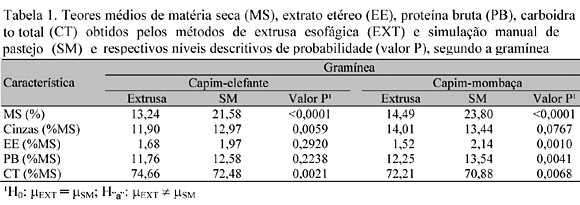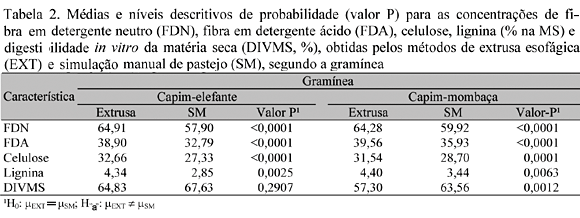The methods of esophageal extrusa and hand plucking sample of forage were compared to evaluate elephant grass and mombaça grass pastures, under rotational grazing. The chemical composition, the fractions of nitrogenous and carbohydrates compounds and the in vitro dry matter digestibility were evaluated. For elephant grass and mombaça grass 15 and 13 paddocks were used, respectively, with three days of occupation period and samplings were gotten in the third, second and first days of occupation period. The sampling methodologies were compared within forage species by Student’s t test, in paired arrangement. The contents of total carbohydrates, neutral detergent fiber, acid detergent fiber, cellulose, lignin the slow degradation and undegradable fractions of carbohydrates were higher (P<.05), when esophageal extrusa was used, for both grasses. The non fibrous carbohydrates were higher (P<.05) in hand plucked samples. Higher values (P<.05) were found for cytoplasmic and acid detergent insoluble protein fractions in esophageal extrusa samples of elephant grass, however, for mombaça grass, only the fraction C was higher. For the majority of the compounds analyzed, higher values were found in esophageal extrusa samples.
esophageal extrusa; pasture selectivity; hand plucking sample






